All aboard the Reunification Express! We’re now heading from the former North Việt Nam to the former South Việt Nam. Towards the end of a wobbly night on the north/south rail line, we crossed this artificial border and woke up an hour later in the city of Huế.
Huế
Straddling the banks of the Perfume River a few kilometers from its mouth, Huế is rather small – less than half a million people live in this city. But, Huế has played a big role in Vietnamese history. During the two centuries leading up to the Second World War, Huế was the capital of Việt Nam and the seat of the Nguyễn dynasty. A large portion of the modern city of Huế is contained within the moats of the royal citadel. Within the walled royal complex itself is a collection of beautiful pagodas, palaces, and temples dedicated to the various emperors and high-ranking officials that ruled in Huế. (Though they are worshipped at the temples in the citadel, the Nguyễn emperors themselves are buried in monumental tombs just south of the city.) The citadel also contains facilities for the royal artisans and craftsmen, as well as recreation areas such as the emperor’s private tennis court! Unfortunately, many of the structures were seriously damaged or completely destroyed during the war, but restoration and reconstruction efforts are underway. Given its role as the former capital and its location right in the center of the country, Huế is a cultural center for Việt Nam, and hosts events such as the Huế Festival which showcases arts such as music, food, film, and dance. We saw preparations and advertisements for this festival, but missed it by just a few weeks.
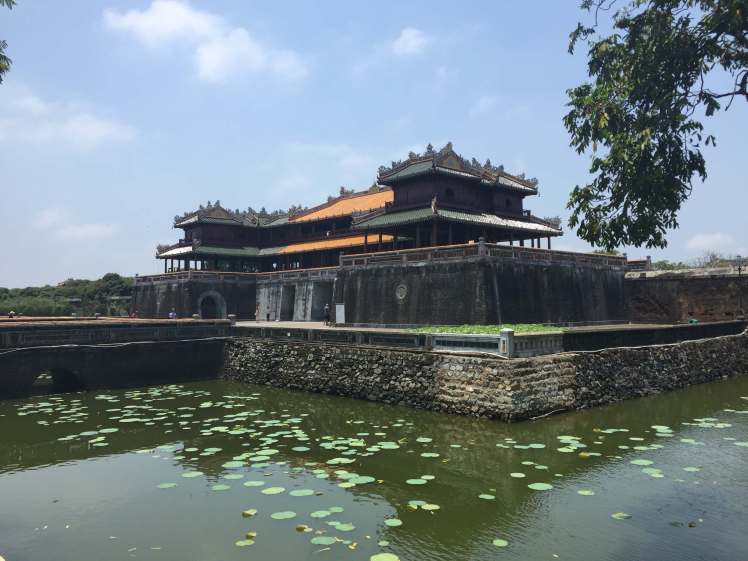
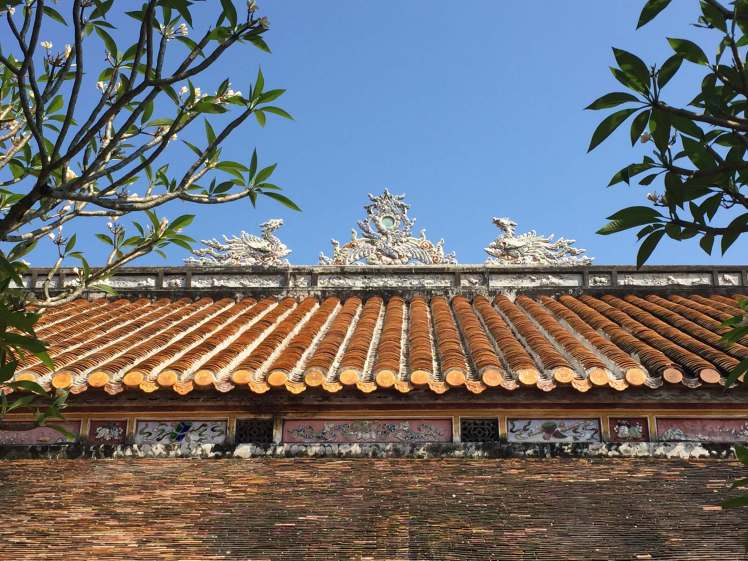
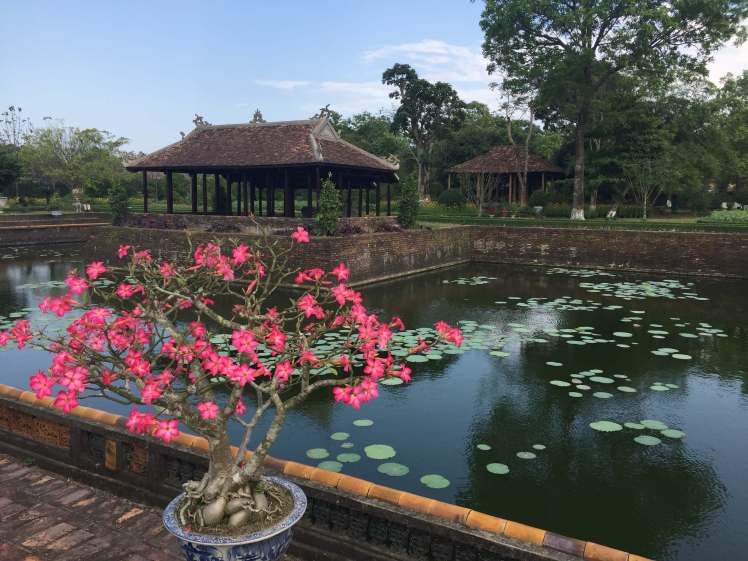

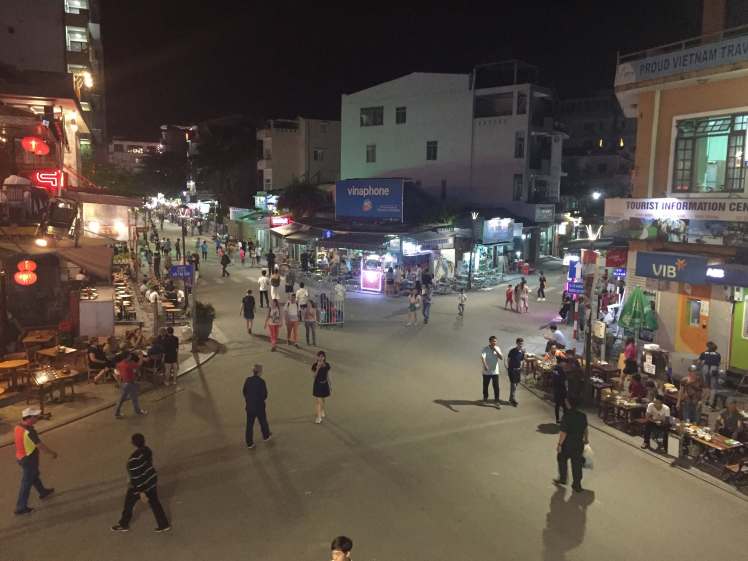
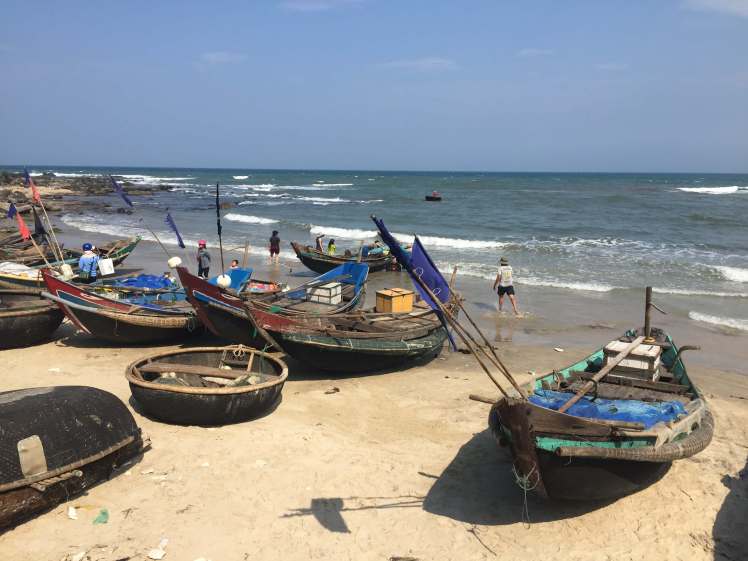
Đà Nẵng
A quick train ride south from Huệ along the mountainous coast brought us to Đà Nẵng, the fourth-largest city in the country. The real center of Đà Nẵng sits on the bank of the Hàn River just before it empties into the sea. However, we stayed in a newer part of town along the beach. We didn’t find anything particularly interesting to do in this port city; many people come here simply to go to the beach, and the absurd prices in that area reflect that. However, the city center is a nice place to walk through. In the evening, Đà Nẵng lights up with neon light shows on every building and colorful boats milling around on the river. The dragon-shaped bridge over the river even breathes fire!
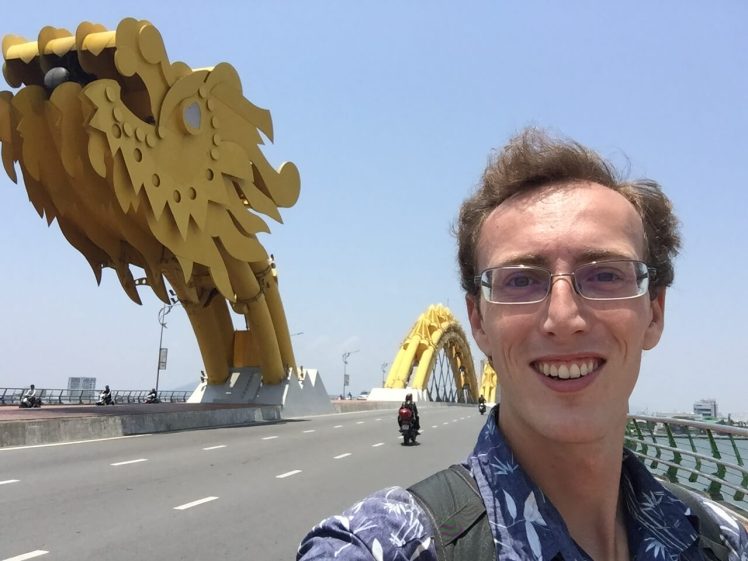

Hội An
Just a few kilometers down the coast from Đà Nẵng is the picturesque little town of Hội An, which sits among the islands of the Thu Bồn River delta. Hội An was once an important center for international trade and attracted merchants from China, Japan, India, and even Europe. As the war in Việt Nam did not cause much damage in Hội An, most of the historic shophouses, temples, and merchant guild assembly halls remain. The quaint charm of the historic city center (a UNESCO World Heritage Site) makes Hội An an attractive town to wander around, and also brings in many tourists. At night, the streets are lit with colorful lanterns, and people row out onto the river in sampans to release paper prayer lanterns into the current.
Though the bombs spared Hội An, Mother Nature does not. In the eighteenth century, political changes along with the silting up of the river rendered Hội An obsolete as a port city. On top of that, every year, the monsoon rains cause the river to swell and inundate the old town. I find it amazing that such old buildings can withstand such a beating, but the people of Hội An seem quite adept at fixing it all back up by the time the rains end and the tourists return.

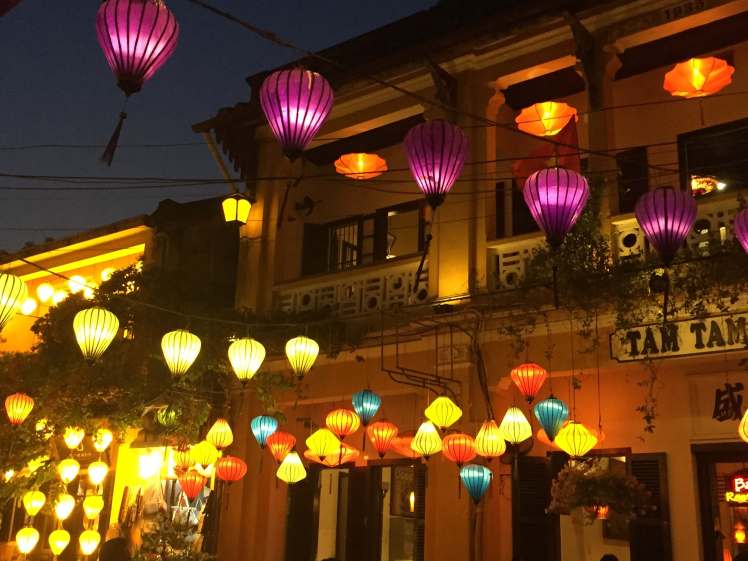

Nha Trang
After spending a nice day in Hội An, we once again boarded the Reunification Express for the overnight journey to the beach town of Nha Trang. Nha Trang has a skyline of highrise beachfront hotels set against a mountainous backdrop and facing some islands just offshore. If Koh Lanta in Thailand is “Little Sweden”, Nha Trang is “Little Russia”. Russian signs and menus are just about as common as English ones in Nha Trang, and the language can be heard everywhere, even by some of the waitstaff at the restaurants! Other than relaxing at our hotel’s rooftop pool and walking along the beach, we didn’t do too much in Nha Trang, as it was just a brief stop on the way to the highlands.
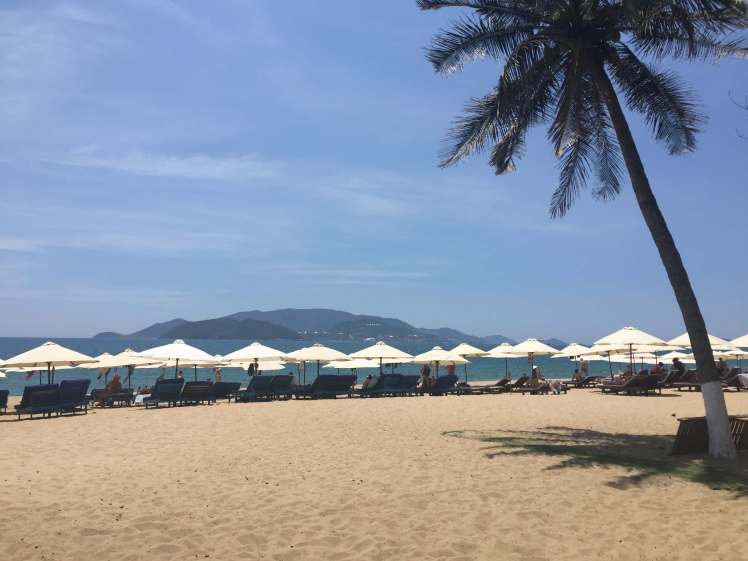
Đà Lạt
Nauseating bus rides seem to be a trend with hill stations. From Nha Trang, we rode up the steep, winding road into the Central Highlands, the mountainous interior region of southern Việt Nam. The driver was swerving and passing so recklessly that several people became sick. Fortunately, Dad and I survived, and we were rewarded in the city of Đà Lạt with beautiful mountainous surroundings and a pleasant temperature – welcome relief from the ever-increasing heat as we moved farther south. At nearly a mile in elevation, Đà Lạt has a good climate for growing coffee, and the countryside surrounding the city is filled with greenhouses growing a variety of produce such as strawberries and cabbage. The town of Đà Lạt itself surrounds a small lake and has a number of interesting buildings and cafés. At night, the road leading from the lake shore to the central market turns into a night market, where countless clothing and food vendors pop up, along with performances on a stage in the center of the market square.




Having traveled over fourteen hundred kilometers from Hà Nội by train and bus, we flew the final short stretch to Hồ Chí Minh City. This quick thirty-minute flight spared us another nauseating bus ride and gave us an extra day to enjoy this final stop on Dad’s visit. If we had had more time to make the journey from Hà Nội, there are several other places we would have liked to visit along the way, but that’s just another reason to come back! Next time, though, I’ll have to return with a motorbike license – that is surely the best (and most authentic) way to fully appreciate the Vietnamese coastline!

Still jealous. That looks and sounds like a lot of fun.
LikeLiked by 1 person